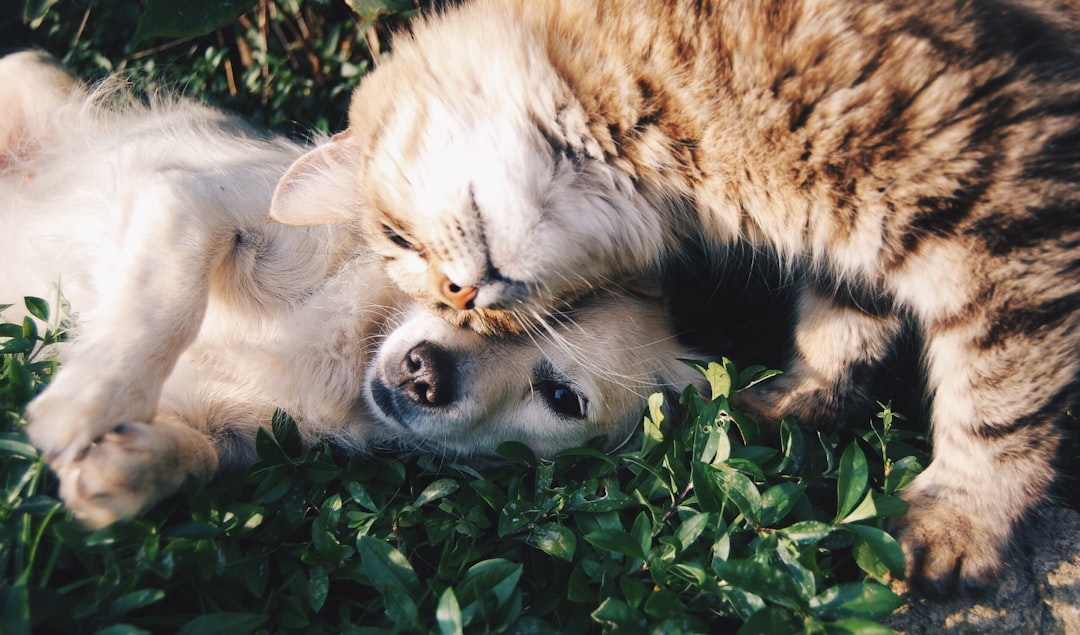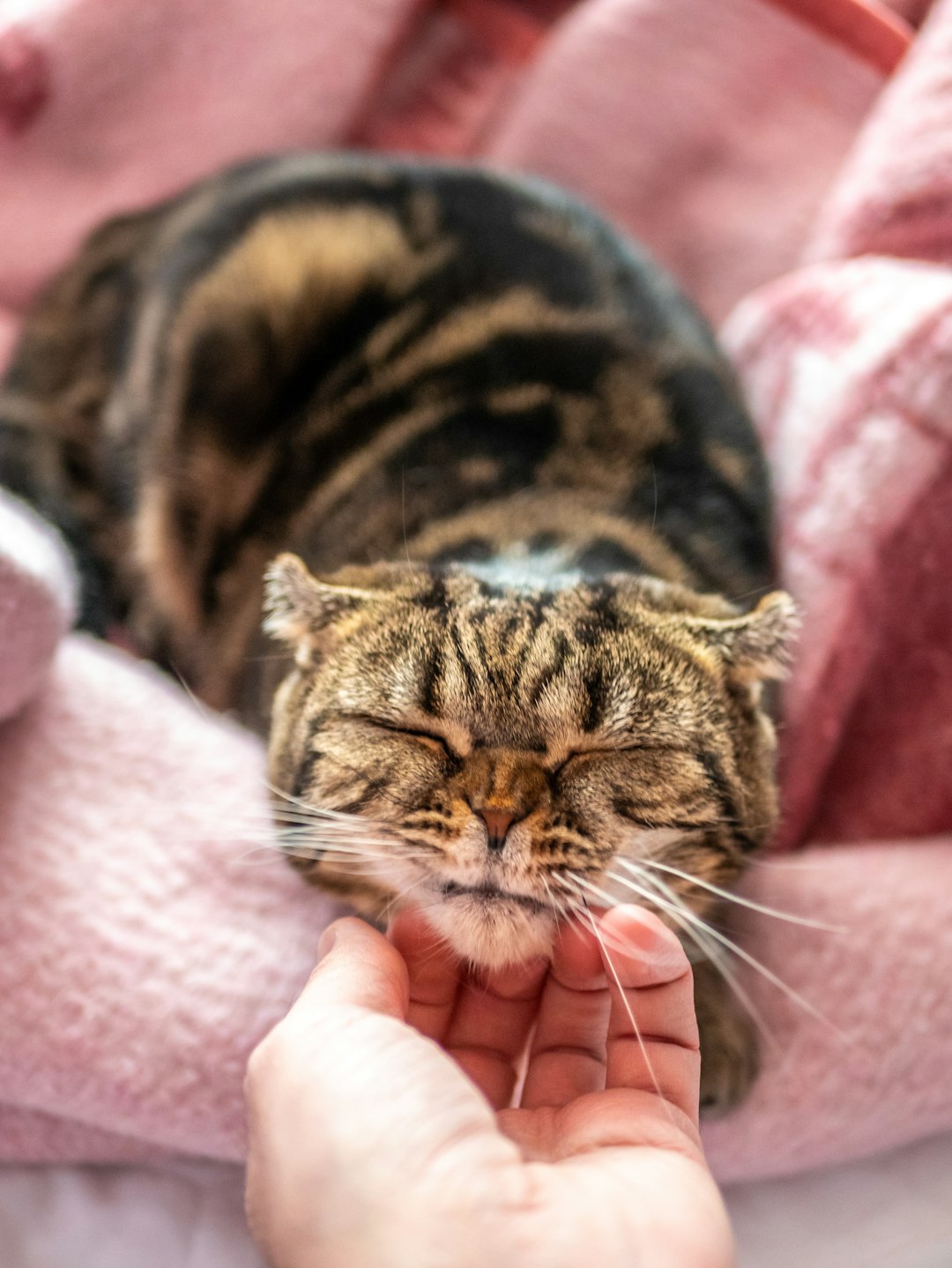Bringing a cat into your home can be a rewarding experience, but it also comes with responsibilities that are crucial for your feline’s wellbeing. Understanding your cat’s unique needs goes beyond just providing food and shelter; it involves fostering a nurturing environment that promotes their health and happiness. In this guide, we will explore Cat care tips that cover essential aspects such as proper feeding, safe living spaces, and the importance of regular veterinary check-ups. Additionally, you’ll learn about grooming, mental stimulation, and socialization to ensure your cat thrives in every way. By following these simple steps, you can create a harmonious life for both you and your beloved pet.
Understanding Your Cat’s Needs
Basic Needs of Cats
Cats are fascinating creatures with specific needs that must be met to ensure their overall well-being. Understanding these basic needs is crucial for any cat owner. Here’s a quick overview:
| Need | Description | Importance |
|---|---|---|
| Nutrition | Provide high-quality, balanced cat food. | Promotes health and energy levels. |
| Water | Fresh water should always be available. | Essential for hydration and health. |
| Litter Box | A clean, easily accessible litter box is necessary. | Encourages proper elimination habits. |
| Shelter | A safe and comfortable place to rest is vital. | Reduces stress and provides security. |
| Social Interaction | Regular interaction with humans and other pets. | Supports mental and emotional well-being. |
Understanding Feline Behavior
Understanding your cat’s behavior can greatly improve your relationship with them. Here are some key aspects to consider:
- Body Language: Pay attention to your cat’s posture and tail position; raised tails often indicate happiness, while flattened ones may suggest fear or aggression.
- Vocalizations: Each meow can have a different meaning. A soft meow might indicate affection, while a loud yowl often signals displeasure.
- Play: Cats have a natural hunting instinct. Engage them with toys that mimic prey, which is essential for their mental well-being.
- Purring: This is typically a sign of contentment, but pay attention; sometimes, cats purr when they are in pain.
By knowing these cat care tips, you can create a nurturing environment that accommodates their needs while fostering a happier and healthier life for your feline friend. Understanding these essential aspects will help you enjoy a harmonious relationship with your beloved pet.
Feeding Your Cat Properly
Feeding your cat properly is essential for their overall health and well-being. It involves selecting quality food, maintaining balanced nutrition, and understanding portion sizes. Here are some important cat care tips to ensure your furry friend receives the best diet for a happy life.
Choosing the Right Food
When selecting food for your cat, consider the following factors:
| Factor | Details |
|---|---|
| Age | Kittens require food formulated for growth, while adult cats need food that maintains their health. |
| Activity Level | More active cats may benefit from higher protein and fat levels, while older or less active cats may need lower-calorie options. |
| Health Issues | Cats with sensitivities or health concerns may need specialized diets prescribed by a veterinarian. |
Select high-quality cat food that lists meat as the primary ingredient. Avoid fillers such as corn and soy, as they offer little nutritional value.
Understanding Portion Control
Proper portion control is vital to avoid obesity and nutritional deficiencies. Here are some guidelines to consider:
| Weight Category | Daily Caloric Needs | Recommended Daily Feeding (dry food) |
|---|---|---|
| Underweight (less than 8 lbs) | 180-200 calories | ½ to ⅔ cup |
| Healthy weight (8-12 lbs) | 250-300 calories | ¾ to 1 cup |
| Overweight (more than 12 lbs) | 200-250 calories | ⅔ to ¾ cup |
Always adjust portions based on your cat’s age, activity level, and health status. Consulting your veterinarian for personalized advice will ensure your cat thrives and enjoys an energetic lifestyle. Remember, the right balance is key to a long, happy life for your feline companion!
Creating a Safe Environment
Creating a safe environment for your feline friend is crucial to ensure their health and happiness. By taking a few proactive steps, you can minimize potential hazards and provide your cat with a comfortable living space.
Cat-Proofing Your Home
The first step in cat care is cat-proofing your home. This involves identifying potential dangers and eliminating them. Here’s a comparison of common household items that can be harmful to cats:
| Hazardous Items | Safe Alternatives |
|---|---|
| Toxic Plants | Cat-safe plants (e.g., catnip) |
| Open Windows | Screens for ventilation |
| Loose Cords | Cord clips or covers |
| Small Objects | Designated toy boxes |
| Cleaning Supplies | Pet-safe cleaning products |
Ensure that you store toxic substances, such as cleaning supplies and medications, out of reach. Securing cords and removing small objects can help prevent choking hazards.
Safe Outdoor Exploration
While indoor safety is essential, many cats enjoy the outdoors as well. Creating a safe outdoor space allows them to explore without the risks associated with free-roaming.
Consider the following options for safe outdoor exploration:
- Leashed Walks: Train your cat to walk on a leash. This controlled environment allows them to explore while being securely attached.
- Catios: A catio, or cat patio, provides an enclosed area in your yard where your cat can enjoy fresh air without the risks of predators or busy streets.
- Supervised Outdoor Time: If leash training isn’t suitable, consider supervised playtime in a secure yard or garden.
Incorporating these cat care tips not only keeps your cat safe from harm but also enriches their life and promotes overall well-being.
Regular Veterinary Care
Importance of Routine Check-Ups
Regular veterinary care is essential for ensuring your feline friend remains healthy throughout their life. Scheduling routine check-ups, ideally once a year, allows your veterinarian to examine your cat thoroughly. These visits can help detect potential health concerns before they escalate. During a check-up, a vet will monitor your cat’s weight, assess their physical condition, and provide valuable insights into your cat’s behavior. Here’s a brief overview of what is generally covered during routine visits:
| Check-Up Component | Description |
|---|---|
| Physical Examination | Assessing overall health and identifying any issues |
| Weight Monitoring | Ensuring your cat maintains a healthy weight |
| Dental Check | Evaluating oral health and preventing dental diseases |
| Nutritional Advice | Recommendations for a balanced diet suited to your cat |
Vaccinations and Preventative Care
Vaccinations play a crucial role in protecting cats from various infectious diseases. Your veterinarian will recommend a vaccination schedule based on your cat’s age, lifestyle, and health status. Key vaccinations include:
| Vaccine | Prevented Disease |
|---|---|
| FVRCP | Feline Viral Rhinotracheitis, Calcivirus, Panleukopenia |
| Rabies | Rabies Virus |
| Feline Leukemia | Feline Leukemia Virus |
Additionally, preventative care goes beyond vaccines. Regular parasite control, including flea and tick prevention, along with deworming protocols, are vital for maintaining your cat’s health. By focusing on these cat care tips, you ensure that your beloved pet enjoys a long and bustling life full of happiness.
Grooming and Hygiene
Maintaining proper grooming and hygiene is essential for your cat’s overall health and well-being. By following a consistent grooming routine, not only do you keep your feline friend looking their best, but you also strengthen your bond with them. Here are key grooming techniques to consider:
Brushing Your Cat’s Fur
Regular brushing is vital for preventing matting, reducing shed hair, and keeping your cat’s coat shiny and healthy. Here’s a quick guide:
| Fur Type | Recommended Brush | Frequency |
|---|---|---|
| Short Hair | Bristle or Rubber Brush | Once a week |
| Medium Hair | Slicker Brush | 2-3 times a week |
| Long Hair | Wide-Toothed Comb | Daily |
Brushing not only removes loose hair but also stimulates the skin, promoting natural oil distribution. Choose brushing tools that suit your cat’s fur type and be gentle to avoid discomfort.
Dental Care Tips
Dental hygiene is an often-overlooked aspect of cat care. Poor dental health can lead to serious health issues. Here are some simple cat care tips for dental hygiene:
- Regular Brushing: Use a cat-friendly toothbrush and toothpaste to brush your cat’s teeth at least two to three times a week.
- Dental Treats: Incorporate dental treats that help reduce plaque and tartar buildup.
- Check-ups: Schedule annual veterinary check-ups, which often include dental examinations.
By maintaining a regular grooming schedule and ensuring good dental hygiene, you can significantly enhance your cat’s quality of life.
Providing Mental Stimulation
Mental stimulation is essential for keeping your cat engaged, happy, and well-adjusted. Boredom can lead to behavioral issues, so incorporating various activities into your cat’s routine is vital. Here are two effective methods for providing mental stimulation:
Interactive Toys
Interactive toys are designed to challenge your cat’s cognitive abilities while keeping them entertained. Below is a comparison of different interactive toy types:
| Toy Type | Benefits | Recommended Age |
|---|---|---|
| Puzzle Feeders | Encourages problem-solving skills | All ages |
| Laser Pointers | Promotes physical activity and agility | Adult cats |
| Catnip-Infused Toys | Stimulates playfulness and interest | Young adults |
Investing in a variety of interactive toys allows your cat to explore different forms of play. Consider rotating toys to maintain novelty, which will keep your feline friend engaged.
Environmental Enrichment
Creating an enriching environment can significantly enhance your cat’s mental well-being. Implement the following ideas to stimulate your cat’s mind:
- Vertical Spaces: Install cat trees or shelves for climbing. This promotes physical and mental stimulation while satisfying their natural instinct to survey their territory.
- Scratch Posts: Providing diverse scratching options helps fulfill your cat’s need to scratch while offering an outlet for their energy.
- Playtime Routine: Schedule regular play sessions with your cat. This not only boosts their mood but also strengthens your bond.
In summary, providing mental stimulation through cat care tips like interactive toys and environmental enrichment contributes to a happier, healthier cat. By prioritizing their mental well-being, you ensure your feline friend leads an active and fulfilling life.
Socializing Your Cat
Socializing your cat is essential for their emotional well-being and can make a significant difference in their overall behavior. Here are some effective cat care tips to help you build a socially balanced feline companion.
Introduce New People Safely
When introducing your cat to new people, it’s important to proceed gradually to avoid overwhelming them. Follow these steps for a smooth introduction:
| Step | Action |
|---|---|
| 1 | Start by allowing your cat to observe from a distance. |
| 2 | Have new guests ignore the cat initially to reduce stress. |
| 3 | Offer treats or toys to create positive associations. |
| 4 | Monitor body language – if the cat seems anxious, give them space. |
| 5 | Gradually let guests engage when the cat feels comfortable. |
Understanding Cat Communication
Cats communicate primarily through body language and vocalizations. Learning these signals is key to ensuring a positive social interaction. Here’s a quick guide:
| Signal | Meaning |
|---|---|
| Tail Up | Happy and confident |
| Slow Blinking | Trust and affection |
| Hissing/Shrieking | Seeking space or feeling threatened |
| Purring | Content and happy |
| Ears Back | Agitated or frightened |
By understanding and respecting your cat’s signals, you create a safe environment that fosters socialization. Remember, every cat has its own personality, so be patient and adapt your approach as needed. Proper socialization ensures a stronger bond between you and your cat while promoting a well-adjusted pet.
Recognizing Health Problems
Understanding how to recognize health problems in your cat is crucial for ensuring their well-being. Cats often hide their discomfort, making it essential for pet owners to be observant. Here are some key factors to consider:
Common Signs of Illness
| Sign | Description |
|---|---|
| Lethargy | Noticeable decrease in activity and playfulness. |
| Changes in Appetite | Sudden loss or increase in eating habits. |
| Weight Loss or Gain | Obvious changes in body weight. |
| Changes in Litter Box Habits | Changes in urination or defecation patterns. |
| Excessive Grooming | Over-grooming may indicate stress or discomfort. |
| Vocalization Changes | Unusual meowing or yowling can signal distress. |
When to See the Vet
Timely veterinary care can prevent potential health issues from becoming more serious. Here are some instances when you should contact your vet immediately:
- Persistent Symptoms: If any symptom lasts longer than 24 hours, a vet visit is warranted.
- Severe Vomiting or Diarrhea: More than once or twice can lead to dehydration.
- Difficulty Breathing: Any indication of respiratory distress requires urgent attention.
- Injury: Any signs of injury or trauma should be assessed by a professional.
- Behavioral Changes: Significant changes in your cat’s behavior may indicate underlying health issues.
By being attentive to your cat’s behavior and understanding these cat care tips, you can better recognize when your feline friend may need medical attention. Active monitoring is key to ensuring a long, healthy life for your pet.
Creating a Routine for Your Cat
Creating a routine for your cat is essential for their overall well-being. Cats thrive on consistency, which helps reduce stress and fosters a sense of security in their environment.
Establishing Feeding Schedules
One of the cornerstones of a healthy routine is a proper feeding schedule. Feeding your cat at the same times each day helps regulate their metabolism. Here’s a simple comparison of feeding methods:
| Feeding Method | Pros | Cons |
|---|---|---|
| Free Feeding | – Convenience – Cats self-regulate | – May lead to overeating |
| Scheduled Feeding | – Controlled portions – Better weight management | – Requires more planning |
To establish an effective feeding routine, consider your cat’s age, health status, and lifestyle. Generally, adult cats thrive on two meals per day, while kittens may require three or more.
Play and Rest Times
In addition to feeding, incorporating designated play and rest periods is crucial. Cats are naturally active during dawn and dusk, but they also need ample downtime. Here’s a breakdown of how to structure play and rest:
| Activity | Recommended Time | Benefits |
|---|---|---|
| Play Session 1 | Morning (15-20 mins) | Boosts energy and stimulates mind |
| Rest Period | Noon (1-3 hours) | Allows recovery and reduces stress |
| Play Session 2 | Evening (15-20 mins) | Encourages bonding and exercise |
By implementing these cat care tips, you can create a routine that enhances your cat’s mental and physical health. With a consistent schedule, your furry friend will feel more secure and, ultimately, happier.
Frequently Asked Questions
What are the essential items I need before bringing a cat home?
Before bringing a cat home, you should prepare a few essential items to ensure a smooth transition for your new pet. Start with a litter box and high-quality cat litter, as this is crucial for their bathroom habits. Additionally, provide a comfortable bed where they can feel safe and secure. Food and water dishes are essential, and choose a nutritious cat food appropriate for their age and health needs. Consider scratching posts and toys for mental and physical stimulation, as well as a safe space for your cat to explore. Lastly, a veterinarian visit is advisable to ensure your cat is healthy and up-to-date on vaccinations.
How often should I take my cat to the vet for check-ups?
Routine veterinary check-ups are vital for maintaining your cat’s health. Generally, it’s recommended to take your cat to the vet at least once a year. During these visits, the veterinarian will conduct a thorough examination, administer necessary vaccinations, and monitor any potential health issues. Cats over the age of 7 or those with existing health conditions may require bi-annual visits, as they are more susceptible to illness. Keep an eye on your cat’s behavior and health indicators between visits, and consult your vet if you notice any changes.
What is the best way to groom my cat?
Grooming your cat is essential for their well-being and helps reduce shedding and hairballs. The best way to groom your cat depends on their coat type. For short-haired cats, a weekly brush may suffice, while long-haired breeds require daily grooming to prevent mats and tangles. Use a cat-specific brush or comb to gently remove loose fur and debris, focusing on areas that tend to mat, such as behind the ears and under the legs. Also, take the opportunity to check your cat’s skin for any abnormalities and their ears for dirt or wax. Regular grooming not only keeps your cat looking their best but also strengthens your bond with them.
How do I ensure my cat gets enough exercise?
Cats need regular exercise to stay healthy and prevent obesity, which can lead to serious health issues. To ensure your cat gets enough physical activity, provide a variety of toys that encourage play, such as feather wands, balls, or laser pointers. Dedicate some time each day to interactive play sessions, which can also help your cat expend energy. If possible, create an enriched environment with climbing structures or cat trees where your cat can explore and climb. You can also allow supervised outdoor time in a secured area or harness, but always ensure their safety. Keeping their mind stimulated with puzzle toys can further promote activity and prevent boredom.
What should I do if my cat is not eating?
If your cat is not eating, it can be a cause for concern, and you should take immediate action. First, observe if there are any other symptoms present, such as vomiting, lethargy, or changes in litter box habits, as these may indicate a more serious health issue. Check if the food is fresh and at room temperature, as some cats can be sensitive to changes in their diet or food temperature. Try offering different types of food, such as wet food or a favored treat, to see if they show interest. If your cat continues to refuse food for more than 24 hours, it’s crucial to consult a veterinarian, as prolonged lack of eating can lead to liver problems and other complications.



